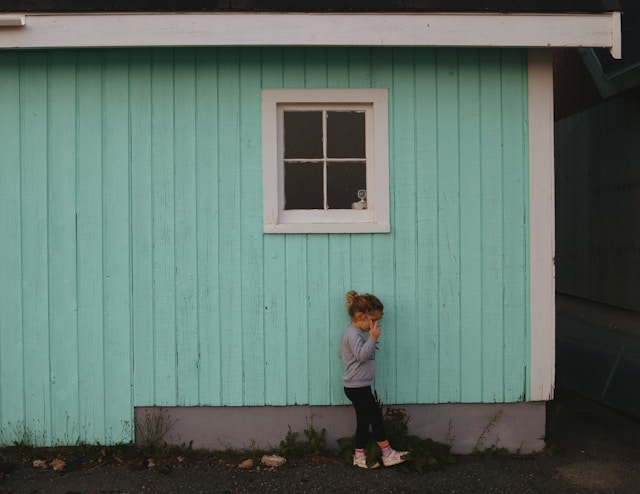Welcoming a baby into your home is an exciting experience, but it also comes with the responsibility of creating a safe environment. As children grow and begin to crawl, walk, and explore, every corner of your home can present a potential hazard. Childproofing your house is one of the most important steps parents can take to prevent accidents and injuries. This guide will walk you through practical childproofing tips for every room, helping you make your home as safe as possible.
Why Childproofing Matters
Every year, thousands of children are treated for preventable household injuries. From sharp corners and electrical outlets to cleaning supplies and unsecured furniture, hazards are everywhere. By learning how to childproof your home, you can reduce risks, prevent accidents, and give yourself peace of mind knowing your little one is safe.
Living Room Safety
The living room is often where families spend most of their time, but it can also be filled with hidden dangers.
Tips to childproof your living room:
-
Cover all electrical outlets with safety plugs or outlet covers.
-
Anchor heavy furniture such as bookshelves, TV stands, and dressers to the wall to prevent tipping.
-
Use corner protectors or edge cushions on coffee tables and side tables.
-
Keep small items like coins, buttons, or batteries out of reach to avoid choking hazards.
-
Hide or secure cords from lamps, blinds, or electronics.
Kitchen Safety
The kitchen is one of the most hazardous places for young children because of sharp tools, hot surfaces, and cleaning chemicals.
Tips to childproof your kitchen:
-
Install safety latches on cabinets and drawers, especially where knives, detergents, or glassware are stored.
-
Use stove knob covers to prevent children from turning on burners.
-
Lock or secure the refrigerator, oven, and microwave.
-
Store cleaning supplies, dish soap, and sponges on high shelves or locked cabinets.
-
Keep trash cans covered or locked to prevent access.
Bathroom Safety
Bathrooms may seem harmless, but they pose serious risks such as drowning, slipping, and exposure to chemicals.
Tips to childproof your bathroom:
-
Install toilet locks to keep lids closed and prevent accidents.
-
Place non-slip mats inside and outside the bathtub.
-
Use cabinet locks to secure medications, toiletries, and razors.
-
Set your water heater to a safe temperature (below 120°F) to avoid scalding burns.
-
Never leave a child unattended in the bath, even for a moment.
Bedroom Safety
Your child’s bedroom should be a safe, cozy space for sleep and play.
Tips to childproof bedrooms:
-
Ensure cribs meet current safety standards with no pillows, stuffed animals, or loose blankets.
-
Anchor dressers, wardrobes, and bookshelves to the wall.
-
Remove window blind cords or replace them with cordless options.
-
Use outlet covers and keep baby monitors or nightlights out of reach.
-
Store toys in bins without heavy lids to avoid injuries.
Stairs and Hallways
Stairs can be extremely dangerous for toddlers learning to walk.
Tips for stairs and hallways:
-
Install safety gates at both the top and bottom of staircases.
-
Ensure handrails are sturdy and securely fastened.
-
Keep hallways clear of clutter to prevent tripping.
-
Use nightlights in hallways for visibility during nighttime.
Outdoor and Yard Safety
If you have outdoor spaces, they require just as much attention when childproofing.
Tips for outdoor childproofing:
-
Lock gates, garages, and sheds where tools or chemicals are stored.
-
Install fences or pool covers around swimming pools to prevent drowning.
-
Regularly check outdoor play equipment for stability and safety.
-
Keep garden tools and fertilizers locked away.
General Safety Tips for the Whole House
Childproofing your home isn’t just about individual rooms, it’s about creating a safe environment everywhere.
General childproofing tips include:
-
Install smoke detectors and carbon monoxide detectors on every level of the home.
-
Keep a well-stocked first aid kit in an accessible but secure location.
-
Post emergency numbers in a visible spot for babysitters or visitors.
-
Use baby gates to restrict access to dangerous areas like kitchens or laundry rooms.
-
Teach children basic safety rules as they grow, such as not touching electrical cords or hot appliances.
Conclusion
Childproofing your entire house may feel overwhelming at first, but it’s one of the best investments in your child’s safety. By taking a room-by-room approach and using essential childproofing products like outlet covers, cabinet locks, baby gates, and corner protectors, you can significantly reduce household hazards.

